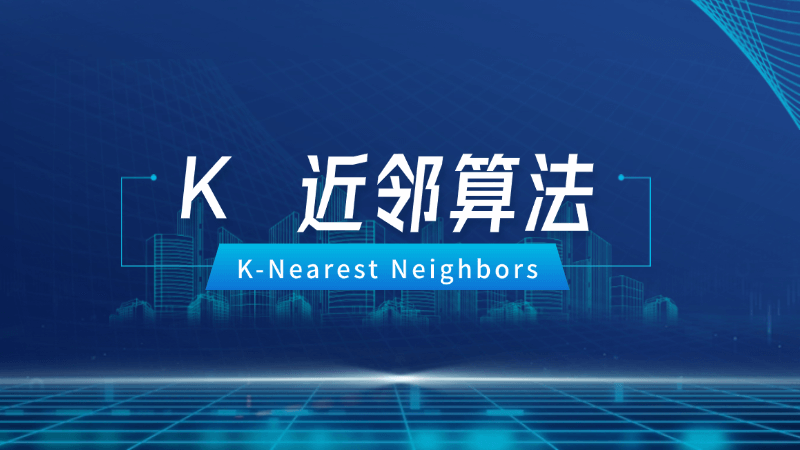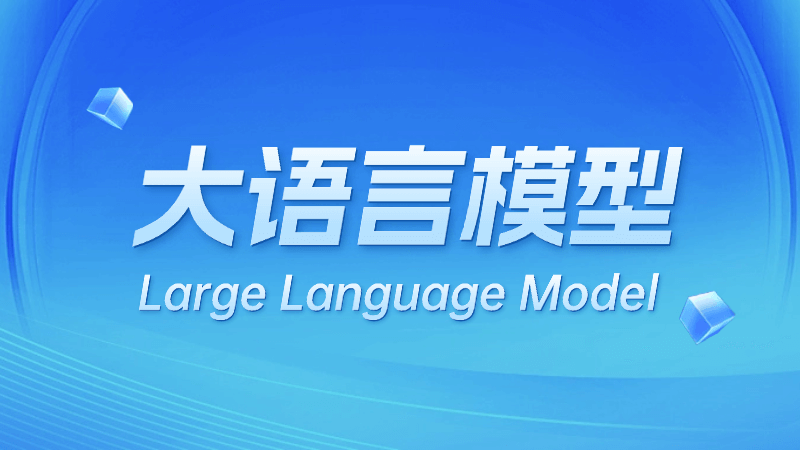What is the K-Nearest Neighbors algorithm (K-Nearest Neighbors), in one article
Definition of K Nearest Neighbor Algorithm
The K-Nearest Neighbors algorithm (K-Nearest Neighbors) is an instance-based supervised learning algorithm that can be used for classification and regression tasks. The core idea of the algorithm is very intuitive: given a new sample, find the K training samples closest to it in the feature space and make predictions based on the information of these neighbors. For classification problems, a voting mechanism is used to take the category that occurs most among the K neighbors as the prediction; for regression problems, the average of the target values of the K neighbors is taken as the prediction. The K in the algorithm name stands for the number of neighbors considered and is a key parameter that can be adjusted by the user.The K-nearest neighbor algorithm is a nonparametric method that does not make any assumptions about the data distribution and is highly adaptable. The choice of distance metric is crucial, common ones are Euclidean distance, Manhattan distance, Minkowski distance, etc. Different distance metrics are suitable for different types of data. Algorithm performance is also affected by feature scaling, which usually requires normalization preprocessing. k-nearest neighbor algorithms, also known as memory-based learning, essentially store the training data and retrieve it by similarity computation during prediction. The advantage of the method is that the model is simple and intuitive, the disadvantage is that the computational cost of the prediction phase increases significantly as the amount of data increases.

Historical origins of the K-nearest neighbor algorithm
- Early conceptualization: In the 1950s, Fix and Hodges first introduced the basic concept of nearest neighbor classification in nonparametric discriminant analysis. This work laid the foundation for the formalization of the subsequent K-nearest neighbor algorithm.
- Theoretical system establishment: In 1967, Cover and Hart published the paper "Nearest Neighbor Pattern Classification", a systematic analysis of error rate bounds for nearest neighbor classifiers. This seminal work provides theoretical guarantees for the algorithm.
- Algorithmic refinement promotion: In the 1970s, with the pattern recognition research boom, K nearest neighbor algorithms were widely used in various fields. Researchers began to explore the effects of different distance metrics and K-value choices on performance.
- Challenges in the age of big data: In the 21st century, the traditional K-nearest neighbor algorithm faces a computational efficiency bottleneck in the face of massive data. This prompted researchers to develop various optimization techniques such as KD trees, ball trees and other accelerated data structures.
- Modern integration development: In recent years, K-nearest neighbor algorithms have been combined with deep learning to produce new methods such as deep metric learning. Meanwhile, distributed implementations on big data platforms have expanded the range of algorithm applications.
Core Principles of the K Nearest Neighbor Algorithm
- Basis of similarity assumptions: The algorithm is built on the assumption of local continuity, i.e., neighboring points in the feature space have similar properties. This assumption is consistent with people's intuitive perception of the world and is a fundamental guarantee of the effectiveness of the algorithm.
- Critical role of distance metrics: Different distance metrics determine different definitions of "proximity", which directly affects the performance of the algorithm. Euclidean distance is suitable for continuous features, Manhattan distance is more robust to outliers, and cosine similarity is suitable for high-dimensional sparse data.
- The Art of K-Balancing: Too small a K value is susceptible to noise interference, leading to overfitting; too large a K value smoothes the decision boundary and may ignore local features. The optimal K value needs to strike a balance between bias and variance.
- Geometric properties of the feature space: Algorithm performance is closely related to the geometric structure of the feature space. The dimensionality catastrophe problem is particularly acute in high-dimensional spaces, where the difference in distance between points becomes insignificant.
- Voting weighting strategy: While each neighbor votes with equal weight in the standard K-nearest neighbor algorithm, the weighted K-nearest neighbor assigns different weights based on distance. The closer the neighbors have more influence on the decision, this improvement improves the accuracy of the algorithm.
Workflow of K Nearest Neighbor Algorithm
- Data preprocessing phase: Normalize features to eliminate the effect of differences in the magnitude of different features. Ensure the fairness of the distance metric and avoid certain features dominating the distance calculation.
- Distance matrix calculation: The distance between the sample to be tested and all training samples is calculated during prediction to form a distance matrix. This step has high computational complexity and is the main bottleneck in the efficiency of the algorithm.
- Nearest Neighbor Search Process: Find the training samples corresponding to the K smallest distances from the distance matrix. Efficient search algorithms such as KD-tree can significantly reduce the time complexity of this step.
- Application of decision rules: Majority voting is used for classification problems and averaging is used for regression problems. In the case of a tie vote, the category to which the closer sample belongs is usually chosen.
- Optimization of results assessment: Evaluate algorithm performance through cross-validation and adjust K-value and distance metric parameters. Model selection needs to consider the specific problem domain and data characteristics.
Advantageous features of K-nearest neighbor algorithm
- The principle is intuitive and easy to understand: The logic of the algorithm is straightforward and does not require a complex mathematical background to understand, and this intuition makes the K-nearest neighbor algorithm the case of choice for teaching introductory machine learning.
- No training process required: As an inert learning algorithm, K-nearest neighbor has no explicit training phase, and new data can be added to the model at any time, allowing the algorithm to quickly adapt to changes in data distribution.
- Natural Processing Multi-Classification: The algorithm naturally supports multi-category classification problems without the need to construct multiple classifiers as some binary classification algorithms do, and the algorithm performs stably in multi-categorization scenarios.
- Theoretical error rate upper bound: When the training samples tend to be infinitely many, the error rate of the nearest-neighbor classifier is no more than twice the Bayesian error rate, ensuring the reliability of the enhanced algorithm.
- Adapting to complex decision boundaries: Decision making based on local information, the K-nearest neighbor algorithm is able to learn complex nonlinear decision boundaries, allowing the algorithm to excel when dealing with complex real-world data.
Limitations of the K Nearest Neighbor Algorithm
- computational efficiency bottleneck: Prediction requires calculating the distance to all training samples, and the time complexity grows linearly with the amount of data, making it difficult to apply the algorithm to large-scale datasets.
- The problem of dimensional catastrophe: In high-dimensional feature space, the distance between points becomes lack of differentiation and the performance of the algorithm decreases significantly, and feature selection or dimensionality reduction becomes a necessary preprocessing step.
- Sensitive to noise figure: Noise and outliers in the training data can directly affect the prediction results, especially when the value of K is small, the data quality has a greater impact on the performance of the algorithm.
- Feature scaling dependencies: The performance of the algorithm strongly depends on the way the features are scaled, and normalization preprocessing is indispensable if a large range of values for some features dominates the distance calculation.
- Imbalanced data challenges: When the sample sizes of the categories vary widely, the majority category can have an excessive effect on the classification of the minority category, which needs to be ameliorated by using weighted voting or sampling techniques.
Practical Applications of the K Nearest Neighbor Algorithm
- Recommender system construction: User-based collaborative filtering is essentially an application of the K-nearest neighbor algorithm to make recommendations by finding similar users or items. E-commerce and streaming media platforms make extensive use of this technique.
- Complementary diagnostics: Aids physicians in disease diagnosis based on the similarity of patient symptoms to historical cases. Algorithms can integrate multiple clinical manifestations to provide decision support.
- Image classification tasks: In computer vision, the K-nearest neighbor algorithm can be used for simple image classification, such as handwritten digit recognition. Although deep learning is better, K-nearest neighbor is still used as a benchmark method.
- Credit risk assessment: Banks use the K Nearest Neighbor algorithm to analyze the similarity of a customer to a customer with a history of defaults for credit scoring. The algorithm is able to combine multiple risk factors.
- Geographic information analysis: Analysis and prediction based on geographic proximity in GIS systems, such as house price assessment and environmental monitoring. The natural proximity of spatial data is suitable for K nearest neighbor algorithm.
An improved variant of the K-nearest neighbor algorithm
- Weighted K-nearest neighbor algorithm: Assign different weights to different neighbors based on distance, and the closer the distance, the greater the weight. This improvement improves the sensitivity of the algorithm to local structures and enhances the prediction accuracy.
- Distance metric learning: Automatically learn the distance metric function that best fits the particular data through machine learning methods. Methods such as large-scale neighborhood component analysis are representative of this direction.
- approximate nearest neighbor search: Develop approximation algorithms to accelerate nearest-neighbor search for large-scale data, e.g., locally sensitive hashing, hierarchical navigable small-world graphs.
- kernel k-nearest neighbor algorithm: Introducing kernel tricks to map the data to a high-dimensional feature space in which the K-nearest neighbor algorithm is executed, capable of handling more complex nonlinear problems.
- Distance-weighted feature selection: Combining feature selection techniques to optimize feature weights in distance metrics. The related method can automatically identify important features and improve the performance of the algorithm.
Parameter tuning of the K-nearest neighbor algorithm
- K-value selection strategy: The optimal K-value is usually selected through cross-validation, starting with a small value and gradually increasing it to observe the change in model performance. As a rule of thumb, it is recommended to choose an odd number of K-values to avoid the case of flat votes.
- Distance metric selection: Choose a suitable distance metric based on data type and feature characteristics. Euclidean distance is commonly used for continuous features, Hamming distance is suitable for categorical features, and cosine similarity is commonly used for textual data.
- Weighting function design: In weighted K-nearest neighbor, a reasonable weighting function is designed, e.g., inversely proportional to the square of the distance. The weighting function affects the sensitivity of the algorithm to local structure.
- Application of dimensionality reduction techniques: In the face of high-dimensional data, features are preprocessed using dimensionality reduction techniques such as principal component analysis. Dimensionality reduction both improves computational efficiency and alleviates the problem of dimensionality catastrophe.
- Parallel Computing Optimization: Accelerate the distance computation process by utilizing multi-core processors or distributed computing frameworks. Modern big data platforms provide technical support for algorithms to be applied at scale.
© Copyright notes
Article copyright AI Sharing Circle All, please do not reproduce without permission.
Related posts

No comments...




